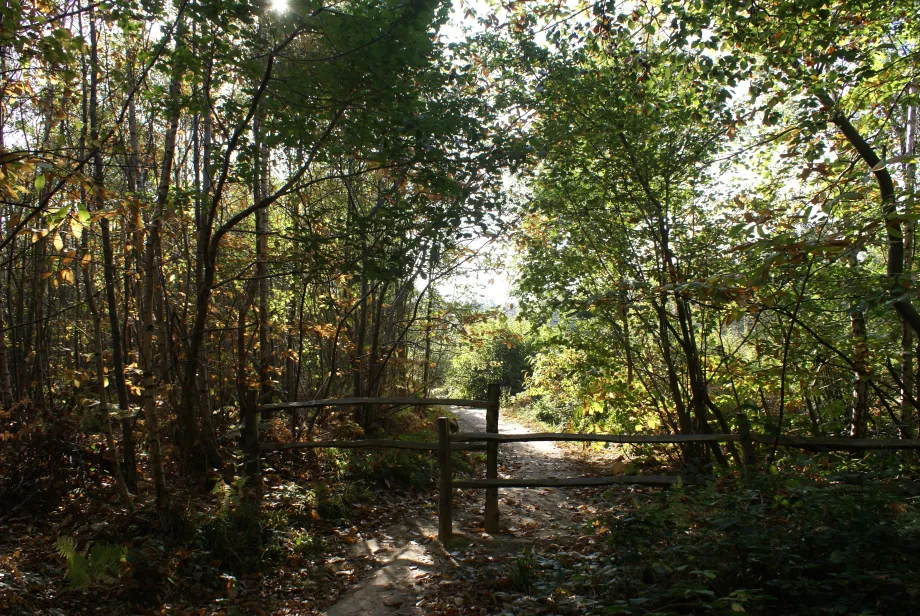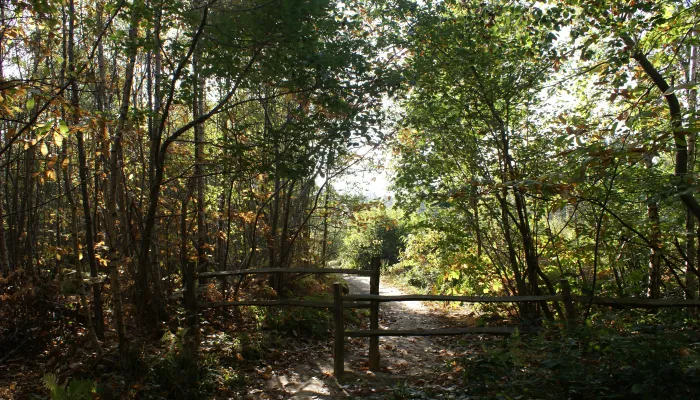Kent Wildlife Trust and CPRE Kent welcome the decision by Canterbury City Council to remove a controversial site for large-scale development in the heart of the Blean woodland complex from its 2040 draft Local Plan.
The proposed site for 2,000 houses on land owned by the University of Kent between the villages of Blean, Tyler Hill and Rough Common was removed from the draft Local Plan by Canterbury City Council prior to a new round of public consultation due to start next week.
“This decision reflects the strong views of the local communities surrounding the proposed development site,” said Andrea Griffiths, Director of CPRE Kent, the countryside charity. “It shows that Canterbury City Council is listening to local communities and engaging with their concerns. The Forest of Blean is one of Kent’s most important stretches of natural habitat and vital for people and wildlife alike – the idea of compromising its value with a development such as the one proposed here shocked and horrified those who love and respect this wonderful place.”
These concerns were documented in a participatory social research project supported by CPRE Kent and KWT and carried out by independent social researcher Rachael Reilly over the past year. Some 230 people participated in the research, which used participatory methods such as community walks, community mapping exercises and a social survey to document how the large-scale development plans had affected the health and well-being of local residents. The research examined how local residents engage with their local environment and how the threat of losing access to nature and wildlife had impacted their physical health and emotional well-being.
Key findings from the research included the following:
- The land proposed for development is a treasured local amenity used regularly by the local community and people from the surrounding areas. 59% of participants surveyed said they used the land at least once a week (and 88.5% at least once a month) for activities including walking, running, cycling, commuting to school and work and even horseriding. The Crab & Winkle path, at the heart of the proposed development site, is particularly well used.
- Local communities have a deep attachment to and knowledge of their local area, nature and wildlife, which was overlooked during the Local Plan consultation process. Local residents described the land as being part of their identity and felt the potential loss of this land acutely – one person described it as “like having a limb cut off”. There was a surge in ‘citizen-science’ over the past year, with one local birdwatcher recording 72 different species on the land.
- Participants’ main concern about the proposed development was the loss of nature and wildlife: 40.3% of respondents in the social survey cited this as their principal concern and were particularly concerned about the loss of habitat for birds and wildlife in the area, such as Skylarks, Swifts and Yellowhammers. The second main concern was the impact the development could have on local residents’ daily lives, such as increased traffic and congestion, pressure on local services and the loss of a place of recreation (38.5% of respondents).
- 64% of respondents to the social survey said that the development proposals had impacted their health and well-being. This included the initial shock of finding out about the development plans; constant worry and anxiety, including sleepless nights; fears that the development would impact their physical health – both through loss of outdoor recreation space and the increased air, noise and light pollution, especially for those with pre-existing health conditions such as asthma; a sense of helplessness and powerlessness over decisions affecting their lives; and stress and uncertainty about the future.
- 28% of respondents to the social survey said that the development proposals had made them change their plans for the future: 62 out of 100 respondents said that they were considering moving away from the area, something they had never contemplated before, including people who had lived there all their lives and people who had chosen to move there for retirement.
- 64% of respondents were dissatisfied with the Local Plan consultation process: participants criticised the lack of detailed information about the development site, which they said hindered their ability to adequately respond to the consultation on the draft Local Plan. They criticised Canterbury City Council for the non-participatory way in which it had carried out the public consultation and for failing to engage in a genuine consultation with impacted communities. Several people said that this experience had eroded their faith in local and national democratic processes and institutions. 84% of respondents said they were dissatisfied with how the University of Kent had engaged with local communities.
“This research shows just how deeply local communities care about their natural environment and wildlife, and how determined they are to protect it,” said Hollie Du Preez, Deputy Director (Strategic Conservation Initiatives) at Kent Wildlife Trust. “While saving part of the Blean is excellent news, other areas remain under threat from large-scale development - including land at Brooklands Farm, which is currently at the planning application stage, and Winterbourne Fields in Swale. Protecting these sites is critical not only for nature but also for local people and underpins Kent Wildlife Trust’s Blean Wildscape vision for a reconnected landscape across the woodland complex where wildlife and people can thrive. As Canterbury City Council launches a new round of consultation on the draft Local Plan, we will be reviewing the documents carefully and urging the Council to recognise the opportunity to deliver sustainable development and nature restoration together. Our Blean Biopark proposal shows how this can be achieved in practice by bringing together research, nature-based solutions, wilding, sustainable tourism and regenerative farming to deliver a gateway to the Blean and unlock funding for the University.”
“As Canterbury City Council embarks on a new round of public consultation on the draft Local Plan, we urge them to learn from this research ,” said Ms Griffiths of CPRE Kent. “It is essential that the council consults with local communities impacted by development plans in a more meaningful way. The participatory methods in this research could be used by the council to engage with local communities to develop plans that reflect local concerns and allocate sustainable housing that genuinely meets local needs and protects our natural environment.”
The full report, co-published by CPRE Kent, Kent Wildlife Trust, the Community Planning Alliance and UCL Anthropology Department, can be read here.

© Ray Lewis

